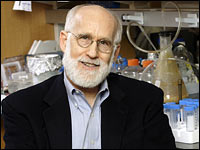
The Doctor’s In, But Is He Listening?, text and podcast from NPR:
“Usually doctors are right, but conservatively about 15 percent of all people are misdiagnosed. Some experts think it’s as high as 20 to 25 percent,” Groopman tells Steve Inskeep. “And in half of those cases, there is serious injury or even death to the patient.”
…
Errors in thinking: We use shortcuts. Most doctors, within the first 18 seconds of seeing a patient, will interrupt him telling his story and also generate an idea in his mind [of] what’s wrong. And too often, we make what’s called an anchoring mistake – we fix on that snap judgment.
An understanding of theory of knowledge is helpful to counteract errors in thinking. How we think is not perfect, and an understanding the weaknesses and faulty conclusions we are susceptible to making is helpful. That can help avoid jumping to conclusions that are faulty and to design systems that counteract such behavior.
Related: Epidemic of Diagnoses – Write it Down – The Illusion of Understanding – Illusions – Optical and Other – health care improvement posts
Read an exceprt [the broken link was removed] from the book: How Doctors Think by Jerome Groopman .

